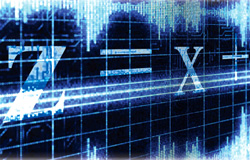
The ability to use inexpensive, mass-produced personal computers for digital audio recording and mixing has greatly expanded the accessibility of these tools.
The addition of a FireWire, USB, or Thunderbolt audio interface and some software is all that is required to create a digital studio entirely within the computer.
This change has had a dramatic effect on the recording studio and the music business in general.
Essentially, the entire recording studio can now be contained in a single piece of equipment, with the ability to recall the entire project and studio configuration in a few seconds.
The advantages of digital audio are hard to ignore, even for those dedicated to the analog studio paradigm.
Use of personal computers for audio recording has introduced a new set of difficulties.
Each operating system and hardware platform requires different software, and there are differences in the bus structures and interface ports available that complicate the choice of peripheral audio interfaces (Figure 2).
Input/output buses include FireWire and USB high-speed serial interfaces, both of which are possible choices for connecting multichannel A/D and D/A modules to the computer to provide audio access. The Thunderbolt interface protocol promises even faster device interconnection.
The software for recording interacts with the operating system to access these audio inputs and may do so with differing speed capabilities on different computers.With the main choices for personal computer operating systems – Macintosh OS X,Windows, and Linux – several types of interface are supported, but different recording programs are required and the performance of the audio interfaces may differ due to differences in the hardware and device drivers employed in the particular computer used.
Recording engineers must now have some knowledge of the internal workings of their computer. If something goes wrong with the recording system, it becomes necessary to isolate the problem by troubleshooting a complicated series of interactions between software, computer, and peripheral hardware that may not be well documented. Each manufacturer provides information about their part of the system, but no one company is responsible for the entire system, leaving the user to deal with the problem.
An issue we encounter with digital audio that is not found in analog systems is related to the time it takes to execute instructions. Even in complicated analog systems, computations occur in real time or instantaneously to human observers. Digital processes take varying amounts of time to complete, making parallel processes no longer synchronous.
When monitoring inputs through computer-based audio systems (software monitoring), there is a time lag between the sound input and the sound played back by the program. The delay is a function of the sample rate and buffer sizes chosen.
An alternative to this software monitoring is to monitor the analog inputs through a mixer at the input rather than through the software. Many systems include automatic delay compensation to resynchronize internal processes, but this function does not eliminate the delay we encounter from the A/D and D/A conversion processes.
When digital audio devices are connected, their clocking must be identical to maintain synchrony. Thus digital audio introduces a need for clock distribution that is not found in analog systems.
One of the advantages of software is the ability to refine and upgrade its performance over time. This ability can also be a drawback if the compatibility issues we encounter with continual updates continue to render code obsolete at a rapid rate. Not only the inherent performance of the software itself must be considered but also the interaction of the applications with the operating system used by the computer.
The operating system (OS), the code that determines the operation of the CPU and peripherals, is developed either by the company that makes the computer or by an outside company that provides the OS software. The recording application software may be written by programmers without advanced knowledge of the new developments in the OS. Keeping the OS and application software synchronized can therefore become a major issue.
A full-time studio technical staff often provided such maintenance in the past, but the personal computer–based studio is frequently the responsibility of a much smaller staff or simply the engineer alone. The engineer must therefore become a knowledgeable computer technician in order to keep computer-based recording systems working smoothly.
“The Science Of Sound Recording” by Jay Kadis, published by Focal Press (ISBN: 9780240821542), is available here. Purchase the book from FocalPress.com and use discount code FOCAL30 at check out to get 30 percent off and free shipping in the U.S.

